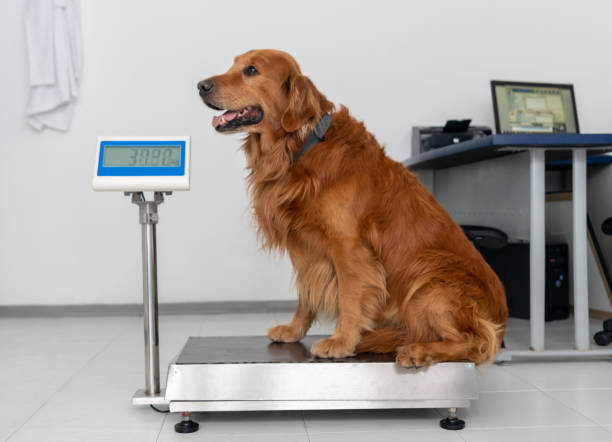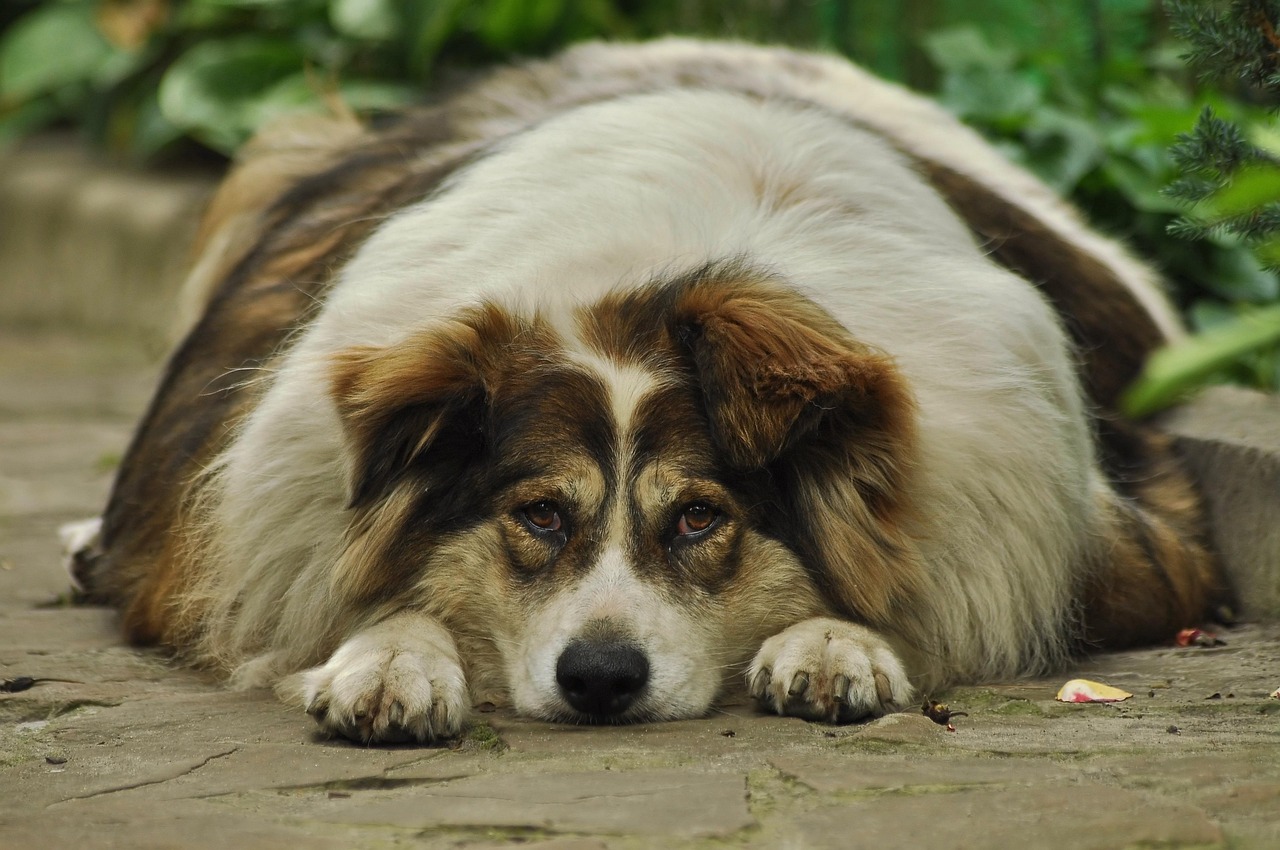If your dog looks a little rounder than usual, they might be overweight. Dr. Bethany Hsia, DVM, co-founder of Coda Pet, says overweight dogs can have worse health in the short and long term. Often, pet parents find it difficult to accurately assess whether their dog is a healthy weight. While it’s estimated that over half of all dogs in the US are overweight or obese, only 17% of pet parents think their dog weighs too much.
If your dog’s overweight, you’re not alone. Pet obesity is a growing issue, with the Association for Pet Obesity Prevention finding that 59% of dogs in the US are overweight or have obesity. Some tell-tale clues that your dog is overweight include slowing down on walks, difficulty getting around, and having a less well-defined waist.
Below, learn more about dog obesity, its causes, and how to get your dog in shape.
How to Tell Your Dog is Overweight
Determining if your dog is overweight isn’t one-size-fits-all. The following are some easy ways pet parents can tell.
- Feel for their ribs. One of the easiest ways to assess your dog’s weight is to feel around their ribs. Generally, your dog is fit if their ribs aren’t prominent and you can feel them easily. If you can’t see or feel the ribs, they’re overweight.
- Consult a visual chart. Most vet offices have a chart or helpful visual you can compare your dog to. These charts show what a healthy and obese dog looks like and what to do if you notice signs of obesity.
- Look at your dog from the side. When looking at your dog from the side, their waist should be slightly raised and not level with the chest. Generally, a dog’s waist should be tucked up and not swinging.
- Check for fat pads. Excess fat on your dog’s body is a major sign of being overweight. Some dogs have fat sacks between their legs that wobble when they walk or on the tops of their hips.
- Weigh your dog. The simplest way to see if your dog is obese is to weigh them. Grab a dog scale or use a regular bathroom one to determine what range your dog falls into. Below is a chart of healthy weight ranges for your dog’s size.
What’s the Recommended Weight For Dogs?
One way to monitor your dog’s weight is by using the body condition score (BCS) to assess their weight. This method involves looking at your dog from above to the side to determine their shape. However, this isn’t the only method. Working out what’s a healthy weight for your dog includes a few different factors, including:
- Breed
- Gender
- Neutered/unneutered
As a general guide, these weight ranges are helpful to keep in mind:
| Dog Size | Recommended Weight Range |
| Toy | 3-18 pounds |
| Small | 9-30 pounds |
| Medium | 25-70 pounds |
| Large | 50-115 pounds |
| Giant | 80-150 pounds |
What Causes Obesity in Dogs?
From too many treats to your dog’s age, many factors can cause dog obesity. Here are some of the most common.
1. They’re eating too much and not exercising
When your dog’s diet and exercise regime aren’t up to snuff, they can quickly fall out of shape, explains Corey Criss, a certified canine nutritionist at The Dog Stop.
That means if you feed your dog too much and don’t walk them enough, they may start to gain weight. If these issues are left unresolved, obesity could be on the horizon.
2. They have a medical condition
Criss says these medical conditions can lead to weight gain:
- Stress
- Hypothyroidism
- Hyperadrenocorticism
- Insulinoma
- Endocrine disease
3. They have a genetic mutation
As dogs age, they move less and burn fewer calories. If you don’t adjust your dog’s food intake to match their decreased activity levels, they may start gaining weight.
Additionally, Research has found that a gene mutation predisposing dogs to obesity is common in Labrador Retrievers and Flat-coated Retrievers. This means pet parents may have to work harder to keep these breeds a healthy weight.
4. They’ve had surgery
Neutering and spaying can increase your dog’s chances of becoming overweight. Reduced sex hormones mean dogs tend to be less active but more hungry. Research shows that neutered male dogs are at a higher risk of obesity than spayed female dogs.
However, the benefits of neutering and spaying your pets often outweigh the risks.
5. They’re taking certain medications
Some medications, including phenobarbital and glucocorticoids, can lead to overeating or weight gain.

What Health Risks Are Associated With Obesity?
“Much like in humans, being overweight can lead to a variety of health concerns,” says Dr. Gavin Casper, DVM, CVA, CVC, and Managing Veterinarian of General Practice at Hometown Animal Hospital. These include:
- Mobility issues
- Breathing problems
- Skin problems
- Orthopedic diseases
- Heart problems
- Chronic inflammation
- Certain types of cancer
- High blood pressure
- Diabetes
- Kidney disease
- Liver problems
How serious can obesity be?
If your dog carries a few extra pounds, that’s probably not a major cause for concern. But unchecked, your dog is at risk of some potentially serious complications. “Many of the medical conditions caused by obesity are lifelong and require sometimes expensive medications and regular vet visits for health tests,” Dr. Casper explains.
Dr Hsia adds that these health conditions can impact a dog’s quality of life and life expectancy. In fact, research shows middle-aged, overweight dogs typically live for 2.5 fewer years than those with normal body conditions.
How To Help Your Dog Lose Weight & Prevent Obesity
If your dog is overweight or obese, their vet or nutritionist can create a weight management plan designed to help them reach a healthy weight in a controlled manner. Dr. Casper says these plans involve decreased calories and more physical activity.
Once your dog has started their weight management plan, you might wonder how soon you’ll see results. “On average, the target is for dogs to lose an average of 1-2% of body weight per week,“ Dr. Casper explains.
Your dog’s weight management plan might include:
- Dietary changes: Reducing your dog’s calories by switching to a weight-loss diet can help them lose weight. Remember to account for any treats your dog gets, and use a scale to measure their food. Switching to low-calorie treats like cucumber or carrots can help, too!
- Regular exercise: Your dog will lose weight if they burn more calories than they consume. Make sure to gradually increase the amount of exercise and follow your vet’s recommendations.
- Routine check-ups: If your dog has a medical condition, joint problems, or other health issues, schedule regular check-ups so your vet can monitor these issues and how they may affect your dog’s weight loss journey.
- Frequent weigh-ins: Knowing how much your dog weighs and checking their BCS regularly can help you track their weight loss. Aim for monthly weigh-ins, and speak to your vet to check your dog is on the right track.
When To Seek Help For Your Overweight Dog
If you’re concerned your dog is overweight, Dr. Casper recommends watching out to see if your dog is:
- Lethargic or slower than usual
- Having difficulty getting around
- Less likely to want to go outside or play
If so, schedule an appointment with your vet and ask them to assess your dog’s weight and overall health.

FAQs About Overweight Dogs
What is the ideal weight for my dog?
The ideal weight for each dog varies depending on a range of factors, such as their age, breed, gender, and whether they’re neutered. The typical weight range for your dog’s breed is a good place to start. For example, Golden Retrievers will usually weigh between 65 and 75 pounds. Your vet can determine the ideal weight for your dog based on their breed and other factors.
How often should my dog exercise?
The amount and intensity of exercise your dog needs will depend on their age, breed, and health. Dogs typically need somewhere between 30-90 minutes of exercise per day. Besides physical exercise, don’t forget to provide plenty of opportunities for mental stimulation with interactive toys.
Can certain dog breeds eat more than others?
Some breeds, like Labradors, Dachshunds, Beagles, and Pugs, are well-known for their love of food. These breeds may be likelier to put on more weight than less food-motivated breeds. Some breeds, including Labrador Retrievers and Flat-coated Retrievers, can also be genetically predisposed to obesity.
How do I know if my dog is overweight?
Telltale signs that your dog is overweight include visual clues like a wider waist, a sagging belly, and pads of fat on the shoulders or hips. You may not be able to feel your dog’s ribs or spine.
Overweight dogs may tire more easily, be reluctant to play, or have difficulty moving around easily. They may also find getting up or down from sitting or lying more challenging. If you notice any of these signs, it’s best to ask your vet for advice.
What are the best foods for weight loss in dogs?
A wide range of weight loss foods is available, but the best choice for your dog will depend on your dog’s age, size, breed, and health requirements. Some popular brands offering weight loss food include Royal Canin, Purina Pro Plan, and Hill’s Science Diet. Before switching your dog’s food, ask your vet if a diet change is necessary and how to make the transition.
